Administration Training
Administration
Occupancy
Schedules
In this exercise we will be creating an Access Schedule
Delegate Points
Access Levels
Roles
People
- Log in and navigate to People. Main Menu-> Administration-> People
- In the lower left-hand side of the view list, click the
 icon.
icon. - Select the type of entity this newly-created Person will belong to. (Integrator, Customer, Vendor or Occupancy).
- Based on the previous choice, select the Integrator, Customer, Vendor or Occupancy using the correspondingly-labeled field.
- Enter personal information about the Person.
- Enter a First Name and Last Name.
- Optionally, enter a Middle Initial and/or Nick Name.
- Optionally, select a Gender and/or Pronouns using the dropdown fields.
- Select the home Floor of the Person.
- Note: the list of available Floor options is limited to Floors that the entity (Integrator, Customer, Vendor or Occupancy) belongs to in its Facility.
- Optionally, enter department/job information about the Person.
- Enter a Job Title, Employee #, Department Code, Department Name, and/or Office/Desk Location.
- Select a Work Environment, Employment Term, and/or Worker Type using the dropdown fields.
- If applicable, use the Start Date and End Date fields to specify a delayed profile activation date or a profile expiration date.
- Note: By default, People are created with a Start Date equal to the current time and a blank End Date. This means their Person profile is immediately active and does not expire.
- Optionally, enter emergency contact information for the Person.
- Enter an Emergency Contact Name, Emergency Contact Relationship, Emergency Contact Home Phone, Emergency Contact Work Phone, and/or Emergency Contact Mobile Phone.
- If applicable, enter contact information for the Person.
- If this Person intends to receive SMS/text Notifications from BluSKY, enter their Phone number and select its type (Work, Home, Mobile, Call Tree, or Fax) using the adjacent dropdown field.
- If this Person intends to receive email Notifications from BluSKY or log in to BluSKY, enter their Email address and select its type (Work, Occupancy, or Personal) using the adjacent dropdown field.
- If this Person intends to receive Intercom calls through BluSKY, select the PortSIP option from the dropdown field. After the text box turns gray, click on the gear button to automatically generate a PortSIP extension for this Person profile.
- Note: Multiple phone numbers or email addresses can be added using the green add buttons.
- If multiple phone numbers or email addresses exist for a single Person profile, using the Default radio button to indicate which contact information is the default.

- If multiple phone numbers or email addresses exist for a single Person profile, using the Default radio button to indicate which contact information is the default.
- If applicable, set the BluB0X Login toggle to 'Yes' to reveal the login information fields.
- Note: The User Name field cannot be edited and automatically uses the value of the default email address.
- Enter a Password for this Person profile.
- Note: Passwords must be at least 8 characters long and include uppercase, lowercase, and special characters.
- Note: If desired, use the shuffle button to generate a random password.
- Re-enter the same value in the Confirm Password field that is in the Password field.
- Note: The eye button can be used to toggle both Password fields' displays between secured text or normal text.

- Note: The eye button can be used to toggle both Password fields' displays between secured text or normal text.
- When finished, use the
 button to create the Person profile.
button to create the Person profile.

Add an Access Level to a Person

- Log in and navigate to People. Main Menu->Administration->People
- Use the search criteria feature, then select the entry you wish to edit from the list.
- Click the
 button in the lower left-hand side to open the Person Edit screen.
button in the lower left-hand side to open the Person Edit screen.
- Note: If the edit button is not available, ensure that only one entry has been highlighted.
- Use the tabs to select Access if not already on the correct page.
- Use the Add Access Level button below the list to add an Access Level.

- In the new popup menu, click all of the Access Levels you want to assign.
- Use the
 button to move them to the assign section of the menu. All Access Levels in the lower section field will be added to the Person.
button to move them to the assign section of the menu. All Access Levels in the lower section field will be added to the Person.
- Note: If you have an Access Level assigned mistakenly use the
 button to move it to the unassigned section again.
button to move it to the unassigned section again.
- Note: If you have an Access Level assigned mistakenly use the
- Add the selected Access Levels to the Person by clicking the
 button.
button. - Commit changes with the
 button.
button.
Add Reader Access to a Person

- Log in and navigate to People. Main Menu->Administration->People
- Use the search criteria feature, then select the entry you wish to edit from the list.
- Click the
 button in the lower left-hand side to open the Person Edit screen.
button in the lower left-hand side to open the Person Edit screen.
- Note: If the edit button is not available, ensure that only one entry has been highlighted.
- Use the tabs to select Access if not already on the correct page.
- Use the Add Reader(s) button below the list to add a Reader.

- In the new popup menu, click all of the Readers you want to assign.
- Use the
 button to move them to the assign section of the menu. All Readers in the lower section field will be added to the Person.
button to move them to the assign section of the menu. All Readers in the lower section field will be added to the Person.
- Note: If you have a Reader assigned mistakenly use the
 button to move it to the unassigned section again.
button to move it to the unassigned section again.
- Note: If you have a Reader assigned mistakenly use the
- Add the selected Readers to the Person by clicking the
 button.
button. - Once the Readers have been added use the Schedule drop-down menu to select the Access Schedule that should be used for this Readers.
- Note: Repeat this step until all Readers have a Schedule or use the copy options to apply to multiple Readers.
- Optional: Assign a start and end time for the access rights using the Access Rights Granted Start and Access Rights Granted End to select a date and time for the access rights to begin and/or expire.
- Commit changes with the
 button.
button.
Vendors
Holidays
Watchlist
Information: This feature is currently in Beta
 button to finish.
button to finish.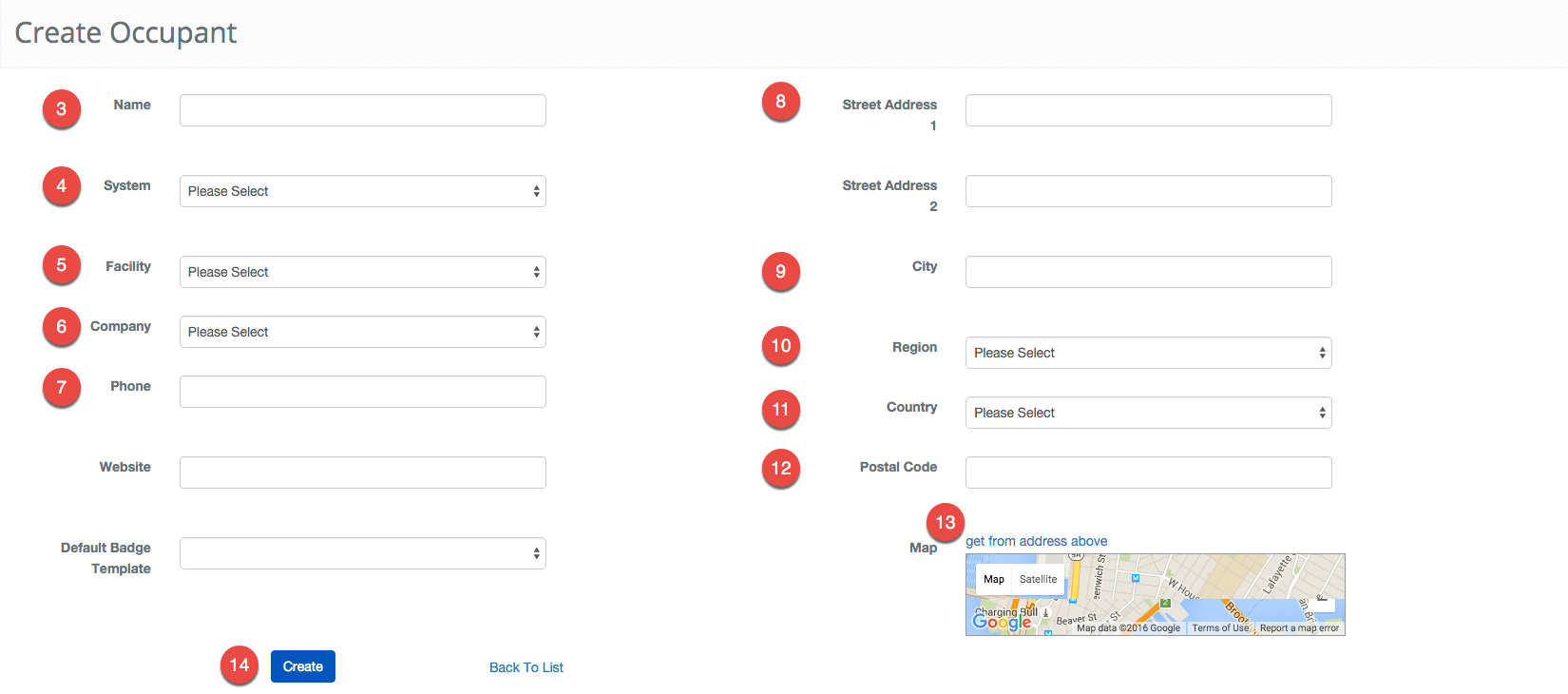
 icon to add another row for more complex timing.
icon to add another row for more complex timing.

 button to add additional delegate points.
button to add additional delegate points. icon to move all of the Readers or Floor Stops.
icon to move all of the Readers or Floor Stops. to add the recipients of the delegated points.
to add the recipients of the delegated points.  to remove the row.
to remove the row.
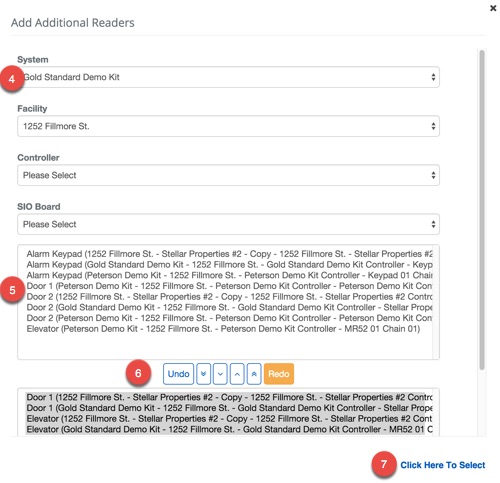
 icon next to
icon next to 
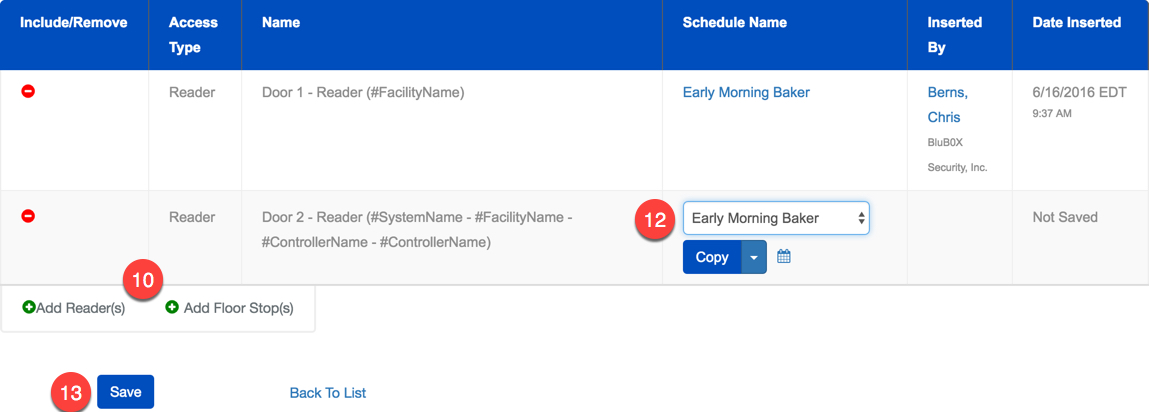
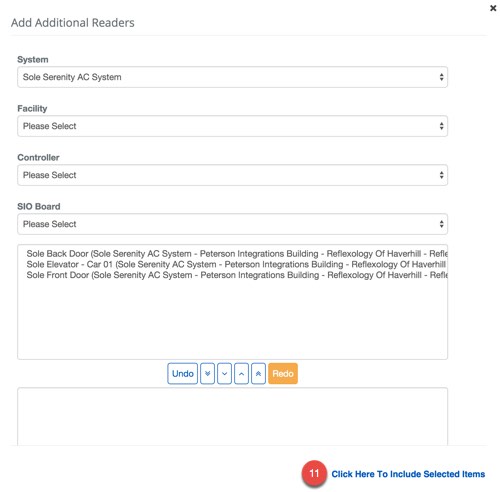
 = Partial Permissions,
= Partial Permissions,  = Complete Permissions.
= Complete Permissions.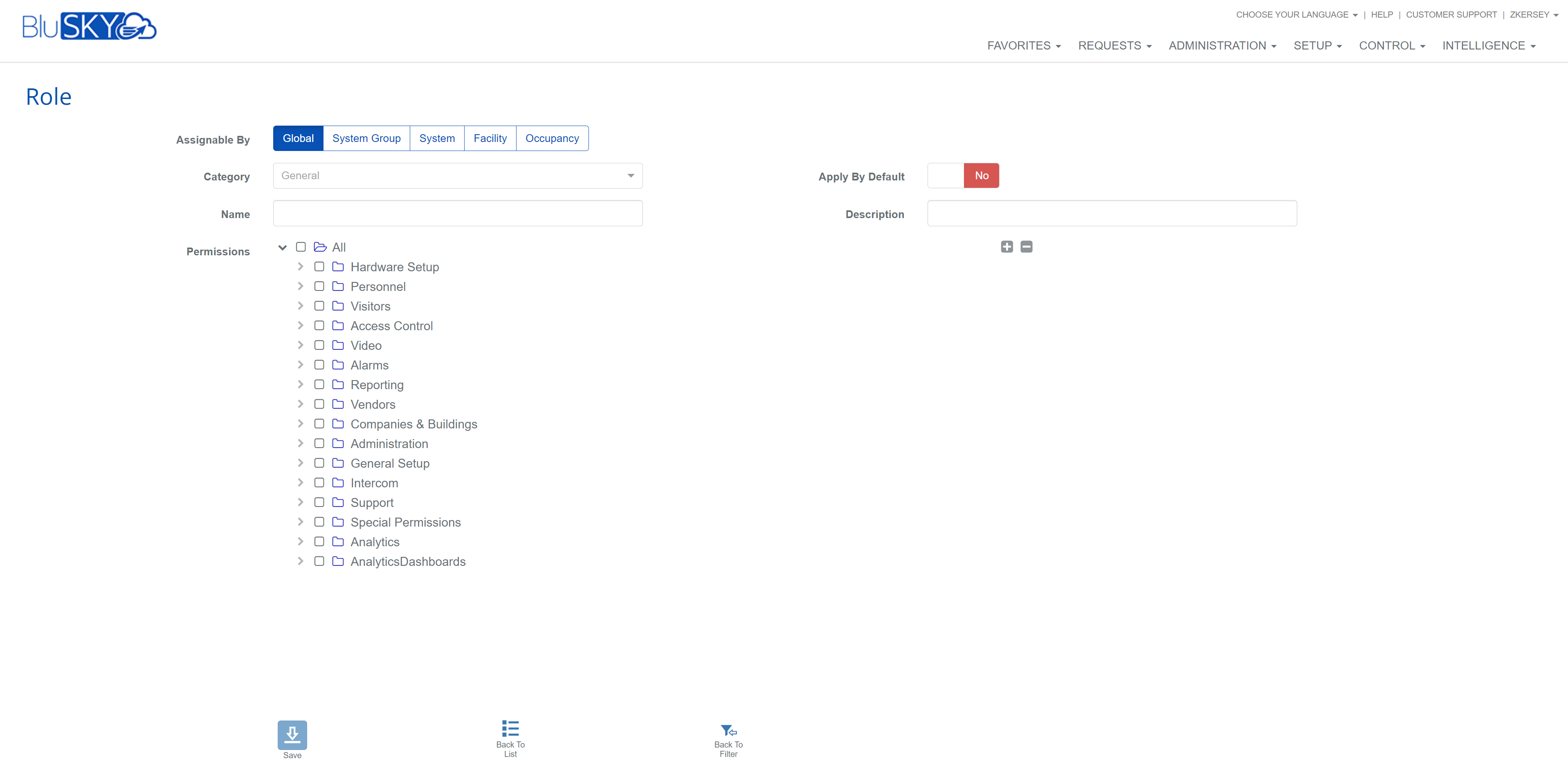

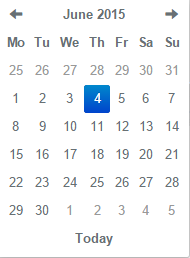
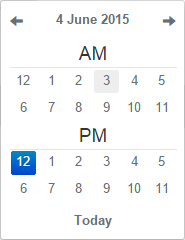
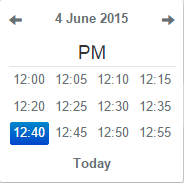

 button to save the new Watchlist.
button to save the new Watchlist.